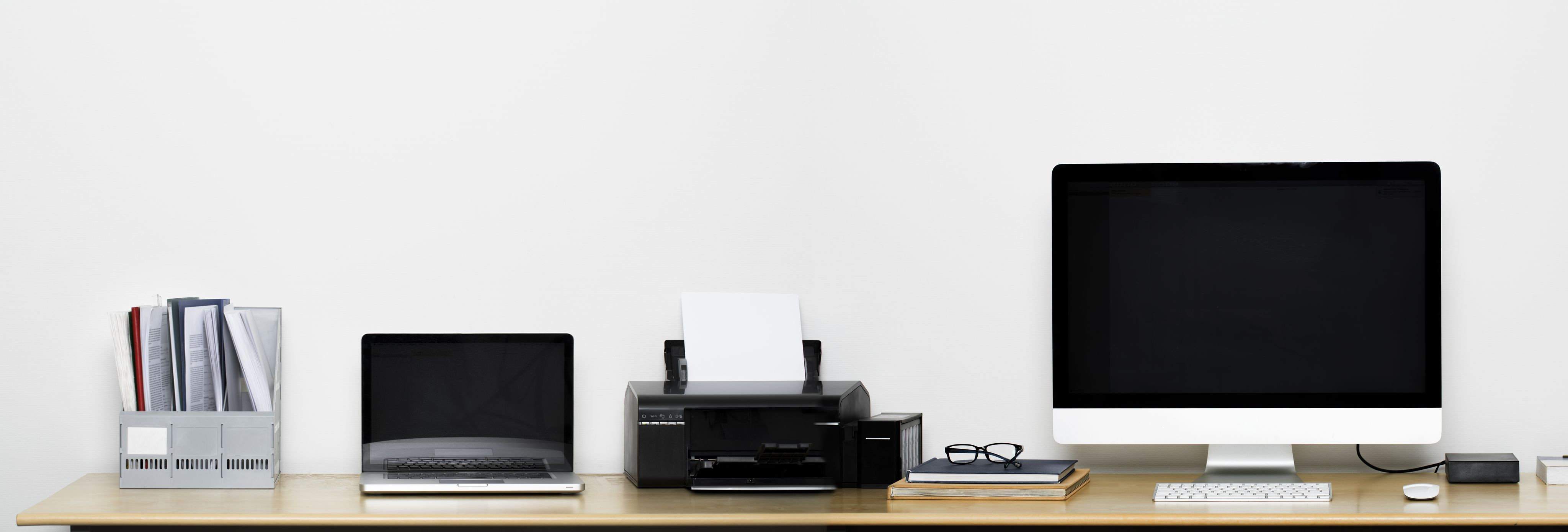Office equipment
Computers, fax machines, printers and photocopiers are an integral part of businesses today. That’s why office equipment can account for up to 20% of your electricity usage.
And while the electricity that powers office equipment is a direct cost to your business, there’s also indirect costs to consider. Office equipment generates heat which can increase the electricity usage of air conditioners by up to 25%.
When you’re calculating the cost of new equipment, it’s important to consider ‘lifetime cost’. For example, if an item is more expensive to buy but operates with one-third of the power cost, it’s important to factor in how much you’ll save on electricity over the equipment’s lifespan.
Computers
- Where practical, use laptop computers which use a lot less electricity than desktop computers
- Because much of a computer’s electricity usage is for the monitor, choose LCD or LED monitors which use less than half the electricity of cathode ray monitors (and also cause less eyestrain!)
- Ensure computers are turned off at night. These days, it’s usually unnecessary to leave office computers on overnight for backing up data, so turn them off and save power
- If ever you do have to leave computers on at night, such as for network applications, make sure you turn off the monitors. Today’s larger, higher resolution monitors use more electricity
- In spite of their name, screen savers are energy wasters. That’s because your monitor uses almost full power when the screen saver appears – even in ‘blank screen’ mode. So ban those cute puppies, bouncing balls and star fields and enjoy significant energy savings
- Instead of a screen saver, use ‘power management’ software that will turn off your monitor after a period of inactivity. Or if you don’t have such software, simply turn the monitor off if you know you’ll be away from your computer for some time
- Use your monitor to control a current-sensing smart power board. That way, when your monitor goes to sleep, your other equipment such as desk lamp, radio, or printer will switch off as well
- Reducing your screen’s brightness level to the lowest comfortable level will also save on electricity.
Copiers
- Turn off your photocopier when it’s not in use, or install a simple plug-in timer or smart power board to automatically turn it off at closing time
- Turn on the energy-saving feature of your copier, as they’re often shipped with this energy-saving mode disabled
- If possible, purchase a combination printer/fax machine/copier to reduce electricity usage.
Fax machines
- Look for a fax machine with power management features and reduce electricity costs by up to 50%. Fax machines are generally turned on 24 hours a day to receive incoming messages. However, they are actually in use for a fraction of the total time they are turned on
- Choose a plain paper instead of thermal paper fax machine. People often copy faxes received on thermal paper onto plain paper, increasing the electricity usage of copiers and paper costs.
Printers
- Use inkjet printers if possible, as they use up to less electricity than laser printers
- Because printers use electricity when they’re switched on but not printing, look for models with automatic ‘power down’ features to reduce their electricity usage by over 65%
- Turn printers off when not in use with a simple plug-in timer, smart power board or occupancy sensor.
Other office equipment
- If something is plugged in to a power socket and it has lights on or gets warm, then it is using power. So unplug laptop cords, cell phone chargers and the like when they’re not in use, because they will use a small amount of power even if no device is attached
- Encourage employees to switch off workspace lights, fans, stereos and other power-consuming personal electrical items when not in use. Smart power boards can help with this.

